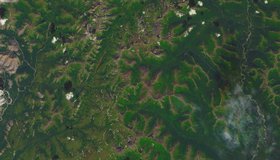
Average is Awesome: California Happy With Latest Snowpack Survey
After years of swinging extremes, state snowpack is at rare average of 110%, setting up good water savings account for year ahead.
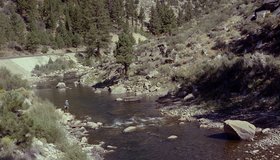
Improving Seasonal Water Predictions Using a Machine-Learning River Forecast System
A WWAO collaboration has published a new paper on how to use next-generation satellite snow data to improve seasonal water supply forecasts using machine learning.

California Mountains Face Weather Whiplash
Last month’s massive snowstorm in the Sierra Nevada followed a dry start to winter. Such extremes in precipitation may become the norm.
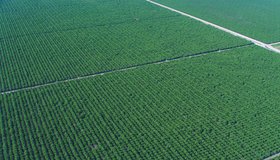
Field-Scale Crop Water Consumption Points to Potential Water Savings in Agriculture
Using remote-sensing data and machine learning, a team from NASA and beyond finds that switching to lower-intensity crops can reduce water consumption in California’s Central Valley by 93%, but this requires adopting uncommon crop types.
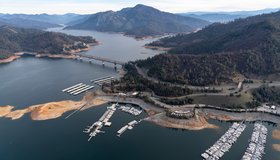
How Business and Government Might Solve the Freshwater Crisis Together
Does the public sector need the private sector’s help to address the freshwater crisis?
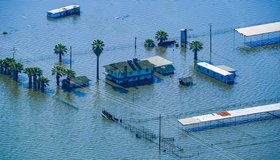
California Zombie Lake Turned Farmland to Water. Is it now Gone for Good?
Resurrected for the first time in decades by an epic deluge of winter rain and snow, by spring the lake covered more than 100,000 acres, stretching over cotton, tomato and pistachio fields and miles of roads.
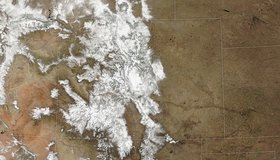
Snowstorm Coats the Rockies
A potent storm pushed snowpack levels above normal across Colorado.
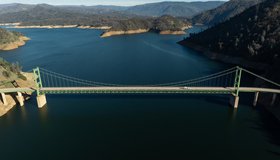
Storms Boost Forecasted California Water Supply
California's State Water Project has been focused on maximizing the capture and storage of water from this winter’s storms.
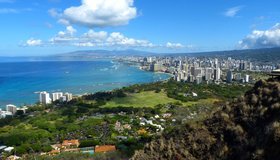
NASA Sees Spike in 2023 Sea Levels Due to El Niño
A long-term sea level dataset shows ocean surface heights continuing to rise at faster and faster rates over decades of observations.
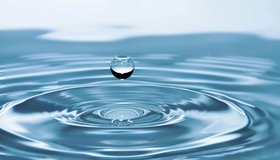
World Water Day: Water for Peace
This year’s theme, “Water for Peace,” encourages the world to focus not only on the conflicts, but also on how water can be at the center of peacebuilding.
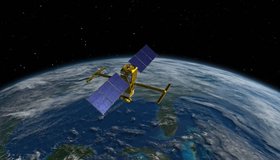
Webinar: Accessing Data for World's Water with NASA's SWOT Mission
Learn how to discover, access, and use Surface Water and Ocean Topography (SWOT) mission data and how these data could lead to new, innovative science and applications in the world of water.
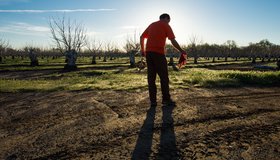
US, Germany Partnering on Mission to Track Earth’s Water Movement
The Gravity Recovery and Climate Experiment-Continuity mission will extend a decades-long record of following shifting water masses using gravity measurements.
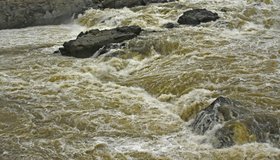
What’s Worse Than a Flood? A Debris Flow
While flood flows are dominated by water, debris flows are a slurry of a lot of things, including boulders.
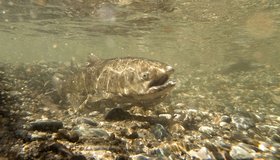
Improving Salmon Habitat and Maintaining Hydroelectric Production in the Columbia River
Without more cool places for migrating salmon to rest as they move through the river, these iconic species could go extinct in the Columbia in as little as two decades.
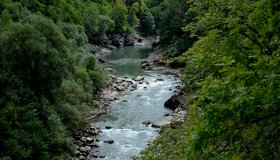
Climate Change Weakening River Seasonality in North
Seasonal flow variability is decreasing as climate change alters Earth’s systems, creating challenges for water management.
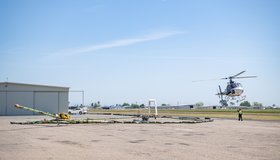
California Water Department Completes First Phase of Innovative Groundwater Mapping Program
State-of-the-art helicopter-based technology and local coordination improve management of our underground water supply.

SWOT Observes Coastal Flooding
The Surface Water and Ocean Topography satellite provides a new view of water on land, at the coast, and in the ocean.
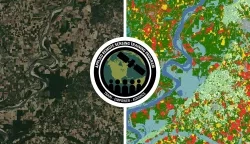
New NASA Training on Using Machine Learning to Help Build Agriculture Solutions
Remote-sensing data is becoming crucial to solve some of the most important environmental problems, especially those related to agricultural applications and food security.

U.S. Cities Could Be Capturing Billions of Gallons of Rain a Day
With better infrastructure and “spongy” green spaces, urban areas have made progress but should be soaking up way more free stormwater.
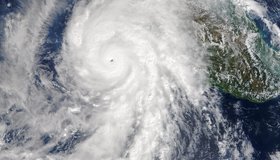
In a Warming World, Climate Scientists Consider Category 6 Hurricanes
For more than 50 years, the National Hurricane Center has used the Saffir-Simpson Windscale to communicate the risk of property damage; it labels a hurricane on a scale from Category 1 to Category 5.
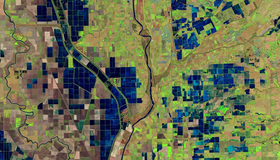
OpenET Study Helps Water Managers and Farmers Put NASA Data to Work
As the world looks for sustainable solutions, a system tapping into NASA satellite data for water management has passed a critical test.
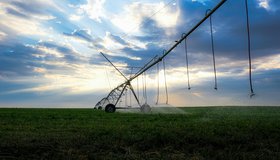
Groundwater Is Declining Globally, But With Hopeful Exceptions
The most detailed global look at groundwater shows much loss but also stories of success in restoring some aquifers.
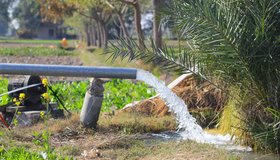
Groundwater Levels Around the World Are Dropping Quickly, Often at Accelerating Rates
Rapid declines are most common in aquifers under croplands in drier regions, including California, the most extensive analysis of groundwater trends so far shows.
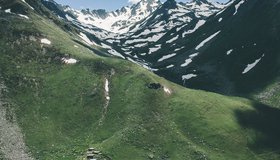
Spring Heat Packs a Punch for Snowpack in Pacific Northwest
New research shows how snowpack loss due to moderate springtime heat can outweigh that of a record-shattering summer heat dome.
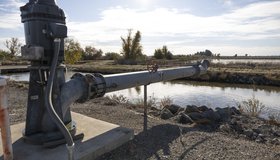
Milestone Towards Groundwater Sustainability in California
The state has finished reviewing sustainability plans for high- and medium-priority groundwater basins.
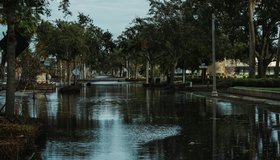
Preparing for Wet Years in the Face of Climate Change
A commentary discusses the need to accelerate California's planning for the wet years that are bound to happen.
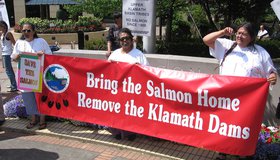
No turning back: The Largest Dam Removal in U.S. History Begins
In a win for local tribes, dammed reservoirs on the Klamath River are being lowered to save fish habitat and improve water quality.
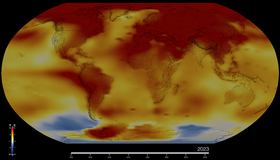
NASA Confirms 2023 as Warmest Year on Record
Global temperatures last year were around 2.1 degrees Fahrenheit (1.2 degrees Celsius) above the average for NASA’s baseline period (1951-1980).

Lake Tahoe Littered with Thousands of Styrofoam Beads
The lake's shores were dusted with white following recent wintry weather. It wasn’t snow, but thousands of polystyrene beads.
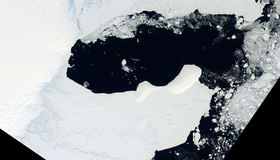
US-Indian Satellite Will Monitor Earth’s Changing Frozen Regions
NISAR, the soon-to-launch radar satellite from NASA and the Indian Space Research Organisation, will track changes in wetlands as well as other Earth vital signs.
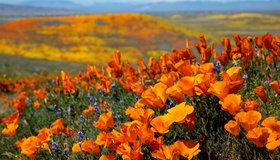
Looking Back at 2023’s Volatile California Water Year
The driest three-year period on record gave way to a series of atmospheric rivers early in the year that pummeled the state.
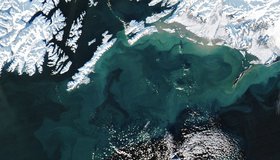
Colorful Swirls in the Gulf of Alaska
The burst of turquoise and tan hues in Alaskan waters is in stark contrast to the snowy shoreline.
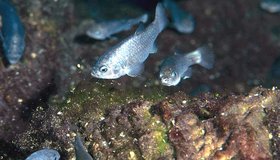
Flash Floods May Support One of the World’s Rarest Fish
Devils Hole pupfish, living within a single pool in Death Valley National Park, may cling to existence in thanks partly to flash floods.
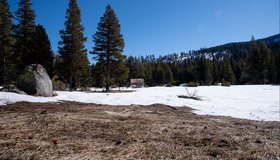
California snowpack lowest in decade despite December storm hope
First survey of season shows snow at 25% of historical average, with brown patches of vegetation across Sierra Nevada.
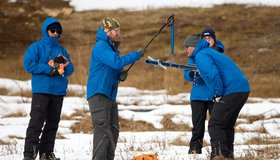
First Snow Survey of Season Finds Below-Average Conditions for California
With above-average reservoir levels, El Niño, and a dry start to the water year, California is preparing for flood or dry conditions in the months ahead.

Beavers Have Engineered Ecosystems for Millennia
Lake sediment analysis in Grand Teton National Park suggest beavers have lived there for millennia and may have kept the ecosystem stable.
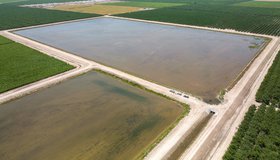
California Plans to Capture Winter Storm Runoff
California's Department of Water Resources encourages groundwater recharge to maximize capture of upcoming storm runoff.

Quarter of World’s Freshwater Fish at Risk of Extinction
New assessment finds 25% of freshwater fish are at risk of extinction, and at least 17% of threatened freshwater fish species are affected by climate change.
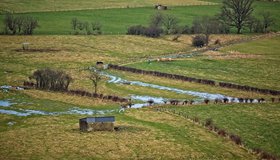
Addressing Groundwater Overdraft in the Sacramento Valley
Though the Sacramento Valley has relatively abundant surface-water supplies, groundwater is also key for many of its communities and farms.

WWAO Hosting Town Hall on Science to Decision Making
Join us at our Science to Decisions town hall at the AGU Fall Meeting next week! Our fabulous speaker panel comes from NASA, NOAA, the U.S. Bureau of Reclamation, Colorado Climate Center, and the National Academy of Sciences, Water Science and Technology Board.
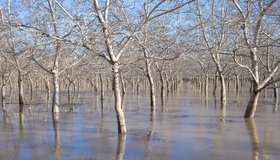
Pacific North-West Cleans up after Floods, Braces for More Rain
Atmospheric rivers have pummeled the region, resulting in the deaths of two people in rushing floodwaters.
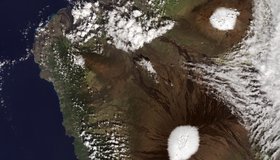
A Dusting of Snow on Hawaii’s Tallest Peaks
Snow lingered on Mauna Kea and Mauna Loa after a storm brought copious precipitation to the island chain.
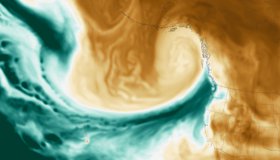
Atmospheric River Flows into the Pacific Northwest
A warm, moisture-laden weather system soaked western Washington and Oregon.
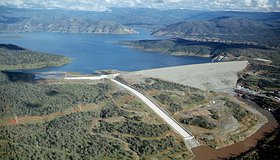
California Announces Initial Allocation of 10 Percent to its State Water Project for 2024
California's Department of Water Resources announced an initial State Water Project allocation forecast of 10 percent of requested supplies for 2024. The SWP provides water to 29 public water agencies that serve 27 million Californians.
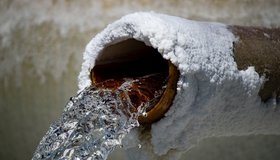
Proposed Rules Require U.S. Cities to Replace Lead Pipes in 10 Years
Most U.S. cities would have to replace lead water pipes within 10 years under new rules proposed by the Environmental Protection Agency to reduce lead in drinking water.
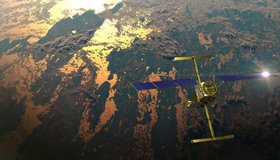
Bringing NASA's Water Data to Life
Google's immersive experience, "A Passage of Water", uses satellite data to illustrate how climate change is affecting Earth’s water cycle.
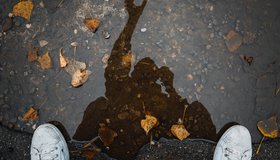
Better Ways to Promote Urban Water Conservation
Reducing water use in cities and suburbs is key for helping communities get through droughts. The Public Policy Institute of California discusses how to optimize urban water conservation.

NASA to Showcase Earth Science Data at COP28
NASA will share its Earth science data and knowhow at the 28th U.N. Climate Change Conference of the Parties (COP28).
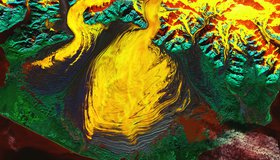
Malaspina Glacier in a Riot of Color
Beautiful color palette reveals the features of an iconic glacial landscape in southeastern Alaska.
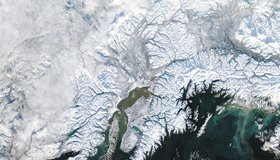
Anchorage Blanketed in Snow
The Alaskan city received record snowfall in November 2023.

Idaho’s Potato Belt
Almost one-third of American potatoes are grown in the Snake River Plain, a belt of low-lying land in the southern part of the state.

Where Does L.A. Get Its Water From?
Along with aqueducts built over the years to transport water from other regions, the city of Los Angeles is looking at other options for its future water supply.
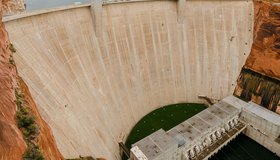
Lake Powell Rebounds but Drought Remains
A wet winter in western states provided a short-term reprieve to the decades-long drought in the reservoir.
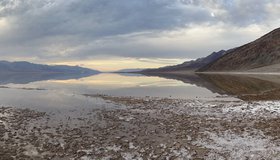
Floodwaters Fill Badwater Basin
Record rainfall associated with Hurricane Hilary in August 2023 created a large temporary lake in Death Valley.

Home Insurance Becoming Harder to Get in Places Like California, Florida
Homeowners in areas prone to disasters – including wildfires, floods, and hurricanes – are finding it difficult to get insured.
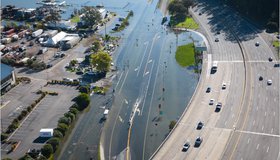
Strong El Niño Could Bring Extra Floods This Winter
A strong El Niño this winter could mean cities along the west coasts of the Americas could see an more frequent high-tide flooding.

Measuring Groundwater Overdraft in the Sacramento Valley
Much recent attention towards groundwater sustainability has focused on the heavily overdrafted San Joaquin Valley. However, the Sacramento Valley also needs to bring its groundwater basins into balance and avoid significant undesirable results of pumping.

El Niño Forecast to Contribute to Food Insecurity
Shifting rainfall patterns are projected to leave millions of people without consistent access to food in late 2023 and early 2024.
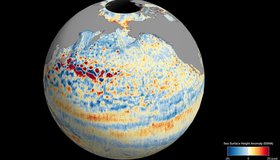
SWOT's Unprecedented View of Global Sea Levels
Sea surface height data from the international Surface Water and Ocean Topography mission yields a mesmerizing view of the planet’s ocean.
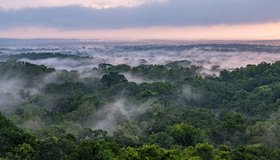
New Radar Mission to Provide Dynamic View of Forests, Wetlands
NISAR will help researchers explore how changes in Earth's forest and wetland ecosystems are affecting the global carbon cycle and influencing climate change.
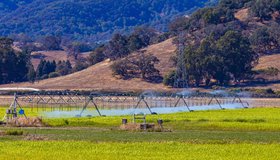
California Groundwater Management Continues
California Advances Sustainable Groundwater Management with Release of 17 Basin Determinations.
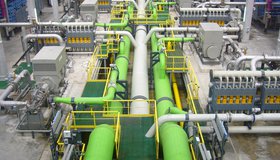
Can Proposed Desalination Plant Solve Arizona’s Water Problems?
A recent 23-year-and-counting megadrought on the overallocated Colorado River has led to significant cutbacks for Arizona and junior water rights holders. Could a desalination plant help?
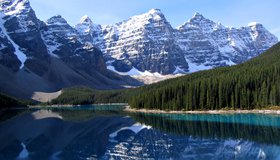
Fresh Powder on the Rockies
A storm brought wintry weather and the first significant snowfall of the season to the Rocky Mountains.
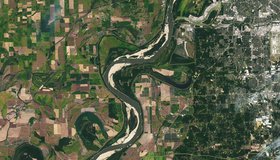
The Mississippi is Mighty Parched
In September, low water levels made it more challenging to ship goods down the river and allowed a wedge of saltwater to move upstream.
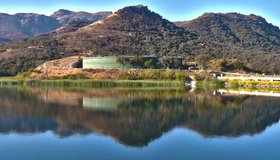
New Partnership to Pilot California's First Blue Water Farm
OceanWell and Las Virgenes Municipal Water District (LVMWD) announced today their partnership to pilot California's first ever Blue Water farm.
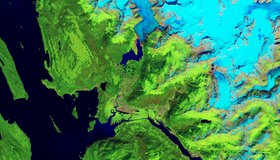
Alaska’s Mendenhall Glacier
The glacier is a popular tourist destination near Juneau, but each year there is less of it to see.

Global Wetlands Losses High But Overestimated
Although wetlands remain threatened in many parts of the world — including the U.S., which accounts for more losses than any other country — worldwide wetland losses have likely been overestimated, according to a new study in Nature.
Drought Mainly to Blame For Uptick in California Tree Deaths
About 36 million dead trees were recorded in California last year, a dramatic increase from previous years. A report by the U.S. Forest Service explains the die-offs are the result of drought, insects and disease.
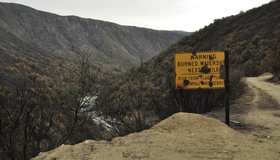
A Double Whammy: Wildfire Debris Pollutes Drinking Water
As our climate changes, extreme wildfires are becoming the norm. They cover the ground with debris that can contaminate watersheds and drinking water supplies after a heavy rain.

NASA/Esri Agreement Boosts Use of NASA Geospatial Data
A new Space Act Agreement between NASA and Esri expands worldwide access to NASA's geospatial content for research and exploration — including new datasets from nearly 100 spaceborne sensors.
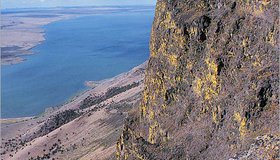
Shrinking Lake Abert
Image of the day: As the lake in southern Oregon dries up, the remaining water is becoming too salty to support key food sources for birds.
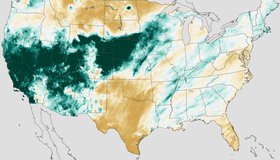
Atmospheric Rivers Take Chunk Out of Drought
Nine atmospheric rivers dropped feet of rain and snow across California and the West Coast from late December to mid-January. The deluge caused deaths, landslides and flooding, but improved the drought situation across a large chunk of the western United States.
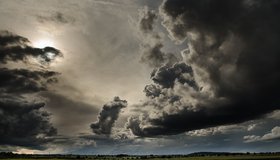
Whiplash weather: Learning From California’s Deadly Storms
How can communities better prepare for the dramatic swings between flood and drought that the western U.S. is experiencing?
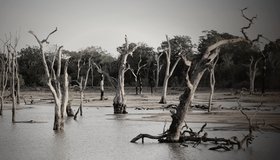
NASA Earthdata Floods Toolkit
About 40% of the world's population live within 100 km of the coast, and floods affect more people than any other type of natural disaster. NASA's floods toolkit offers easy access to NASA Earth data that can help scientists and decision makers understand floods, respond to them, and map their impact.

NASA Measures Underground Water Flowing From Sierra to California's Central Valley
This source accounts for about 10% of all the water that enters this highly productive farmland, including rivers and rain.
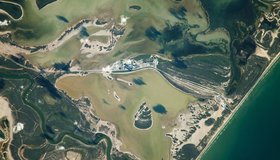
Rio Grande, Meet the Gulf of Mexico
Colorful waterways and wetlands are visible along the river that defines a portion of the U.S.-Mexico border.
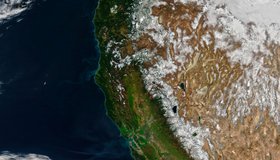
An Outpouring of Color
Following a siege of atmospheric rivers, sediment billowed into the Pacific Ocean along the California coastline.
National Academies Says Wastewater Surveillance of Infectious Diseases Worth Further Investment
Wastewater surveillance was a key part of public-health response to COVID-19. A new report from the National Academies of Sciences, Engineering, and Medicine calls for further development and continued investment.

NASA, Federal Agencies Declare 2023 the Year of Open Science
In an effort to incentivize open science, the White House, 12 federal agencies, and a coalition of more than 85 universities and other organizations have declared 2023 to be the Year of Open Science.

NASA-Related Effort Helping Ensure New York Water Quality
A new project involving Columbia University, New York City and NASA scientists will build a climate action plan to reduce the impact of climate change on New York's water supply, and ensure the agricultural sector continues to protect the city's water quality.
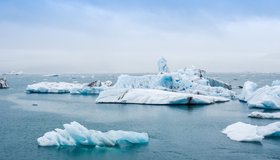
Global Warming Continues With 2022 Fifth Warmest Year on Record
Earth's average surface temperature in 2022 tied with 2015 as the fifth warmest on record, according to an analysis by NASA.
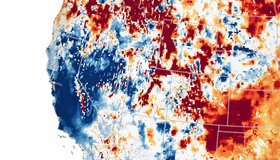
Storms Soak California
Unrelenting storms have inundated the state, delivering soil-saturating rain.

Flooding in California: What Went Wrong, What Comes Next
The recent devastating rains in California are unusual, but not unheard of. What does the flooding tell us within the broader context of climate change and disaster response?

NASA Makes Sense of Earth’s Subtle Motions
What can hidden motions underground tell us about groundwater, climate change, earthquakes and eruptions? NASA scientists are using data gathered 400 miles above Earth to find out.
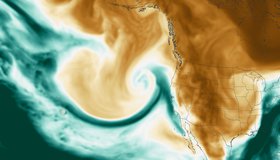
Atmospheric River Lashes California
The latest in a series of atmospheric rivers drenching the state was accompanied by hazardous winds and left thousands of people without power.

Quantifying Bangladesh’s Vast Water Resources
Citizen scientists and NASA satellites join forces to track water supplies.
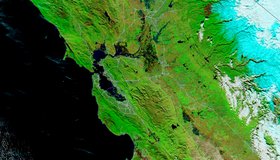
Floodwater Inundates North-Central California
Heavy rain and levee breaches triggered flooding in parts of Sacramento and the Bay Area.

Powerful California Storm Triggers Deadly Floods
An atmospheric river storm caused deadly flooding and mudslides in parts of California, with at least one person reported dead. San Francisco was hit by its second wettest day on record.
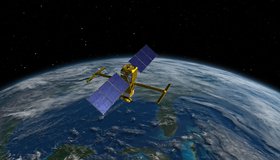
Watch the Latest Water Satellite Unfold in Space
Cameras on the Surface Water and Ocean Topography spacecraft captured the antennas for its main science instrument unfurling in orbit.
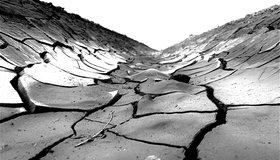
Why Is the Colorado River Drying Up?
There is no historic precedent for today's conditions in the Colorado River. The most severe drought for around 1200 years, climate change and rising temperatures are making it hard to predict the river's future.
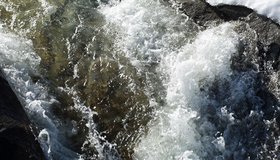
Groundwater Replenishes Much Faster Than Thought
A new climate-based model suggests that scientists may be underestimating the importance of groundwater in sustaining streams and plant life.

Satellites Show Uptick in Cover Cropping on Farms
Big ag can be hard on the planet, with land often left barren between planting, leading to erosion of top soil. New results show farms in the U.S. Midwest are increasingly planting cover crops, benefitting the environment in a myriad of ways.
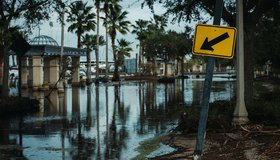
Risk of Flooding in California is Intensifying
Flood risk across California is growing, partly thanks to storms producing more rain than snow. The updated Central Valley Flood Protection Plan plots a path to better flood management and infrastructure, especially in the most vulnerable communities of the Central Valley.
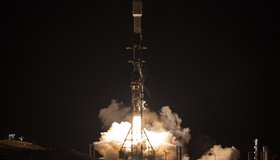
NASA Launches International Mission to Survey Earth's Water
Led by NASA and the French space agency CNES, the Surface Water and Ocean Topography mission will provide high-definition data on nearly all the water on our planet’s surface.
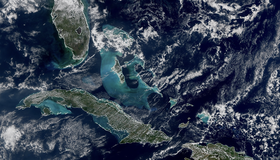
First Images Released From NOAA-21 VIIRS Instrument
Bright blue water in the Caribbean Sea and smog in Northern India appear in the first worldwide image produced with data from NOAA-21’s VIIRS instrument, which began collecting Earth data in December. VIIRS offers global insight into our atmosphere, land, and oceans.

El Niño Varies More Intensely Now Than in Past Millennium
Researchers have found evidence that El Niño is getting stronger in living and fossilized Galápagos corals.
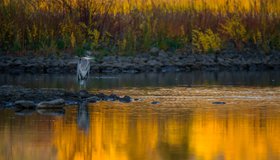
Which Wetlands to Protect? Supreme Court to Decide
The U.S. loses about 60,000 acres of wetlands a year. An upcoming Supreme Court decision could settle which wetlands get federal protection under the Clean Water Act.

How Water Cycles Can Help Prevent Disastrous Floods and Drought
To prevent devastating droughts and floods, humanity can tune in to natural solutions to repair water cycles disrupted by human development.
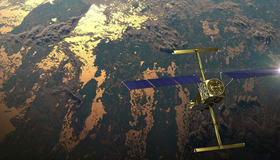
Latest Water Satellite Packs Engineering Punch
Meet the scientific heart of the Surface Water and Ocean Topography mission, which will see Earth’s water in higher definition than ever before.
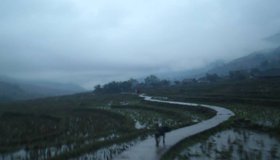
Science for a Rainy Day
The NASA/USAID SERVIR program is helping Asia adapt to changing rainfall patterns.
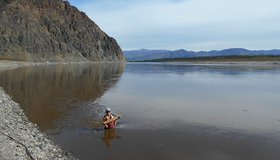
Water Mission to Gauge Alaskan Rivers on Front Lines of Climate Change
The upcoming Surface Water and Ocean Topography mission will provide a trove of data on Earth’s water resources, even in remote locations. Alaska serves as a case study.
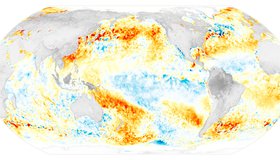
La Niña Times Three
Three consecutive years of La Niña conditions in the eastern Pacific Ocean make it a rare “triple dip” event.

Reaching New Levels in Groundwater Monitoring
As regions around the world face record-breaking droughts, scientists are using seismology to track groundwater levels, showing that well-managed pumping strategies have a big impact.
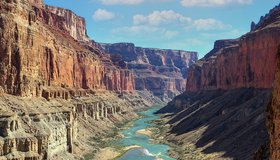
Boost in Drought Mitigation Funding from Inflation Reduction Act
The U.S. Department of the Interior has announced new funding to protect the sustainability of the Colorado River System. $4 billion will be focused on water management and conservation efforts in the Colorado River Basin and other areas experiencing similar levels of drought.
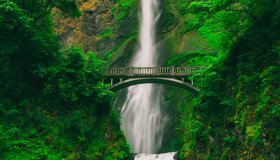
Helping Decision-Makers Improve Water Management
A new study from NASA WWAO and other agency partners sets out a roadmap for how environmental research and stewardship can come together.
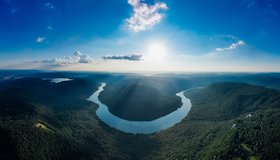
Why Don't Rivers Straighten Out Over Time?
Seen from above, the world's greatest rivers can be recognized by their serpentine curves. But how do these shapes form, do they alter over time and does this matter?

Climate Change Made Hurricane Harvey's Flooding Worse
New research shows that if it were not for climate change, up to 50 percent of residences in Houston's Harris County would not have been flooded by Hurricane Harvey five years ago.

Cities Grapple Future Risk After Recent Flash Floods
Dallas is only the latest flood disaster. The many effects associated with flooding show why a holistic approach to planning for climate change is needed, and what communities can learn from one another in the face of a warming planet.
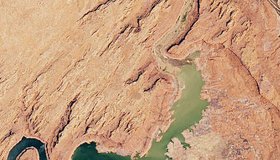
Lake Powell Still Shrinking
The second largest reservoir in the United States now stands at its lowest level since it was filled in the mid-1960s.
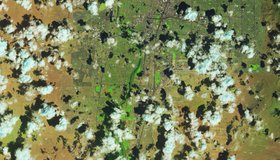
Rio Grande Runs Dry, Then Wet
Residents of Albuquerque saw a dry riverbed for the first time since 1983.
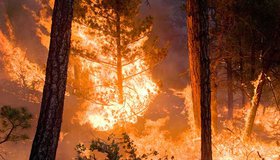
More Evidence of California's Extreme Weather Trend
New research shows the risk of hazardous weather is increasing in the Southwest U.S. More hot, dry winds, less rainfall and greater numbers of winter wildfires are the result.
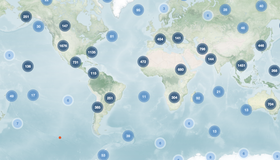
One Look is Worth a Thousand Words
For 20 years NASA's Earth Observatory has told stories of our planet. Its Earth Explorer atlas features 12,000 images showing what's happening locally or on the other side of the world.
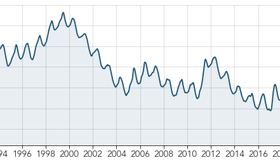
The Great Shrinking Lake
In summer 2022, water levels in the Great Salt Lake dropped to new record lows. Increased water diversions and climate change are responsible.
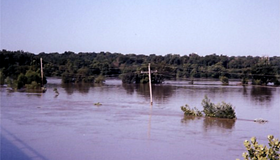
Flash Floods in Death Valley
In one of the driest places on Earth, a thousand-year rain event delivered 75 percent of the yearly average precipitation in just three hours.
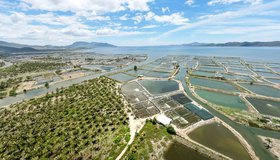
Shrimp Farm Shape Affects Groundwater Pollution
Coastal aquaculture has grown rapidly in recent decades. New findings may help decision makers optimize shrimp-farm layouts, which could help improve coastal water quality.
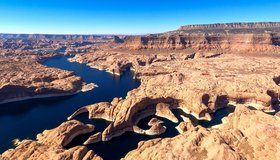
Building Resilience as The Colorado River Dwindles
Policymakers, industry and conservation players, and tribal members explore paths to a sustainable future for the millions who rely on the “lifeblood of the American West.”
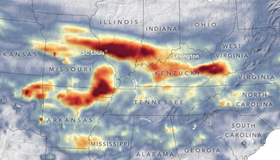
Extreme Rainfall Deluges The Midwest
Record-breaking rain brought devastating flash floods and landslides to the central U.S. at the end of July 2022. Climate change makes extreme precipitation and weather more likely.
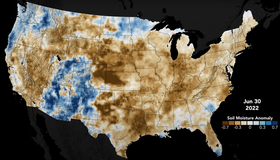
Tracking Deluge And Drought Through Soil Moisture
The changing state of U.S. soils has big implications for farmers and crop production. Our Crop-CASMA soil moisture tool shows how soil has changed over the past year in the U.S. from soaked to dry.
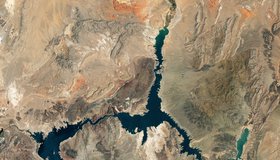
Nasa Images Show a Withering Lake Mead
Water in Lake Mead - the U.S.' largest reservoir - is at its lowest level since 1937 when the reservoir was filled for the first time. At just 27% capacity, NASA images offer a stark illustration of climate change and a long-term drought that may be the worst in the U.S. West in 12 centuries.
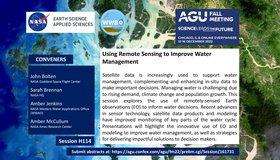
Call For Abstracts: Using Remote Sensing to Improve Water Management
WWAO is hosting a session at the 2022 American Geophysical Union Fall Meeting this December, jointly with NASA's Water Resources Program. Our session looks at how to improve water management using satellite Earth observations. We invite you to join us!

Event: 2022 National Water Use Data Workshop
The 2022 National Water Use Data Workshop will focus on improving water-data management and sharing. The event is led by WWAO collaborators including the Western States Water Council Water Information Management Systems Group, U.S. Geological Survey, Interstate Council on Water Policy, and Internet of Water.
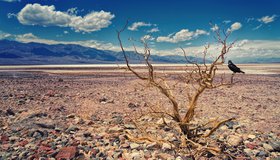
Rare ‘Triple’ La Niña Climate Event Looks Likely
La Niña may be sticking around, unusually, for a third year running. This ‘triple dip’ event — lasting three years in a row — has happened only twice since 1950. It could mean more drought in the southern U.S. and become more regular as the planet warms.
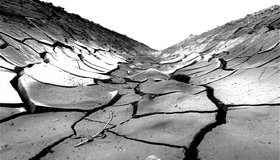
U.S. Megadrought is Worst For Over 1,000 Years
Vast swathes of the western U.S. are currently being affected by a megadrought, which started in 2000 and is almost in its 23rd year. Recent research suggests this ranks as the driest 22-year period in southwestern North America since at least 800 C.E.
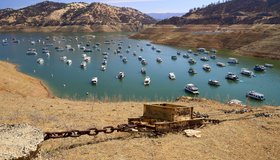
California’s Largest Reservoirs Are Critically Low
Images from Lake Oroville and Lake Shasta compiled by the state show ‘a shocking drop in water levels’ compared to years past. California, like much of the U.S. West can expect a searing, dry summer ahead.

Event: NASA Earth Science Applications Week
Join us for NASA’s Earth Science Applications Week 2022! A three-day virtual celebration of the many ways NASA Earth science is being used to make our world a better place.
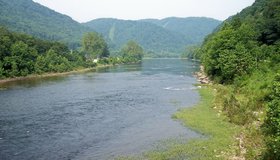
Flood Vulnerability in The Cheat River Watershed
Communities in the Cheat River watershed in West Virginia face frequent flooding, which threatens to reverse years of restoration work aimed at cleaning up pollution from mining. NASA has partnered with a local non-profit to help build resilience to future floods.
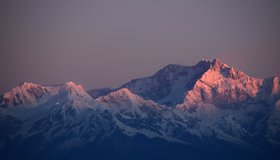
Getting Water Out of Snow With NASA Technology
How much water is in mountain snowpack? That’s a question science has been attempting to solve for decades. Finally, NASA-developed technology provides an accurate answer, using a cutting-edge airborne sensor system and sophisticated software that also predicts when snow will melt.
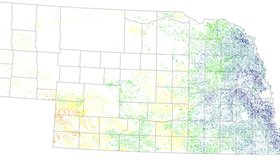
NASA's New Water Use And Crop Yield Simulator
NASA has co-launched a new modeling framework for assessing water use and estimating crop yields at regional levels. GEO-CropSim integrates Earth observations into crop models to help decision makers manage crop production while analyzing water use.
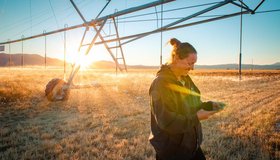
OpenET: Transforming How we Track Water
OpenET is a satellite-based tool that supplies critical information on water use in 17 western U.S. states. It will help farmers and water managers better understand water use and water lost through evapotranspiration.
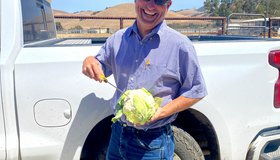
Keeping America's Salad Bowl Full
In seasons when water is scarce, tools powered by NASA data can help farmers decide where to allocate water and nutrients for irrigation and fertilizer.

Call For Abstracts: A Valley of Opportunity
WWAO is hosting a session at the American Meteorological Society's 102nd Annual Meeting in January 2022. We invite you to join our discussion on building water solutions that harness satellite data to address decision-maker needs.
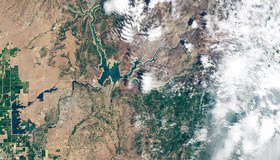
NASA Images Hone in on California’s Severe Drought
California’s reservoirs are rapidly drying up and the water level in Shasta Lake — the largest reservoir in the state — has dipped to about 35% of its capacity. The L.A. Times spoke to WWAO about how the drought looks from space.
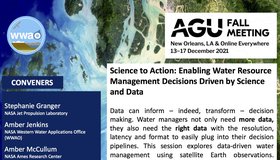
Call For Abstracts: Data-Driven Water Management
WWAO is hosting a session at the 2021 American Geophysical Union Fall Meeting this December. Part of the conference’s Science to Action track, our session looks at how to improve water management using satellite Earth observations. We invite you to join us.
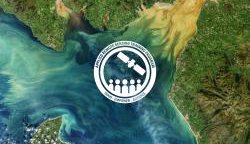
NASA Training on Coastal/Estuarine Water Quality
NASA’s Applied Remote Sensing Training Program (ARSET) is offering a Monitoring Coastal and Estuarine Water Quality webinar as part of its effort to train, empower and advance.
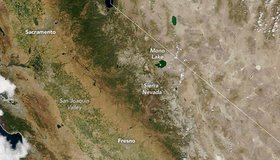
Sierra Snowbank Short on Funds
Mountain snow – a bank account for water across the western U.S. – has turned up insufficient funds this year. The Sierra Nevada snowpack melted nearly a month earlier than usual, leaving reservoirs without their usual inflow of freshwater.
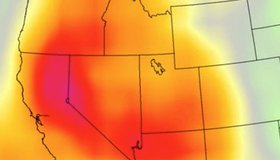
Satellites Track Searing Heat Over U.S. Southwest
While one science instrument mapped the dome of high pressure that settled over the southwestern U.S. in early July, another captured ground surface temperatures.
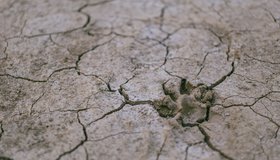
NASA Strengthens Our Resilience to Drought
In the face of severe west-U.S. drought, NASA has launched a new page highlighting its eyes on the drought, which are helping track and monitor the ongoing drought, predict how much water will be available, and improve how we use the water we have.
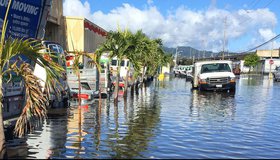
Surge in Coastal Floods Projected, Starting in 2030s
In the mid-2030s, every U.S. coast will experience rapidly increasing high-tide floods, when a lunar cycle will amplify rising sea levels caused by climate change.
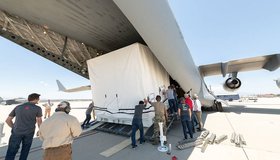
Water-Tracking Satellite Moves Closer to Blastoff
Set for launch next year, the Surface Water and Ocean Topography mission will help scientists monitor Earth’s oceans, as well as the amount of freshwater in its lakes and rivers.
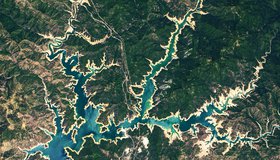
California Reservoirs Reflect Deepening Drought
Four years after California emerged from a severe multi-year drought, the state’s precipitation and lake levels are among their worst since the 1970s. The deepening drought is seen in satellite images of the state’s two largest reservoirs.
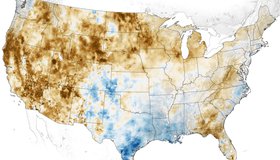
Western Soils And Plants Are Parched
For the second year in a row, drought has overtaken much of the U.S. from the Rocky Mountains to the Pacific Coast. Our Crop-CASMA soil moisture data portal, jointly developed with the U.S. Department of Agriculture, reflects the dry times.
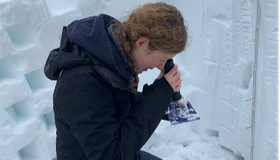
NASA Snow Campaign Wraps For 2021
The 2021 SnowEx field campaign, which is helping determine how much water winter snowpack holds, has come to a close. Teams took snow measurements at six sites across the western U.S., on the ground and with drones and airplanes flying overhead.
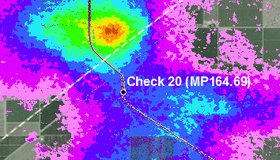
The Central California Town That Keeps Sinking
The very ground upon which Corcoran lies has dipped nearly 12 feet in 14 years as a result of pumping of underground water for irrigation. Scientists can track the subsidence in the region using radar and satellite technology.

Satellites Show Water Cycle Ramping up as Climate Warms
For years, scientists looked for ways to measure large-scale changes in Earth’s water cycle. Satellites measuring the gravity of water delivered. From 2003 to 2019, land evapotranspiration increased by 10%, one sign that our water cycle is ramping up.
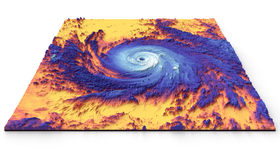
New NASA Earth System Observatory to Help Mitigate Climate Change, Disasters
NASA will design a new set of Earth-focused missions to help mitigate climate change and disasters, fight forest fires, and improve real-time agricultural processes.

Reclamation Provides $2.5M For Snow Water-Supply Forecasting
The U.S. Bureau of Reclamation has announced $2.5 million of funding for 12 projects to advance snow measurement technology with the goal of improving water-supply forecasts.
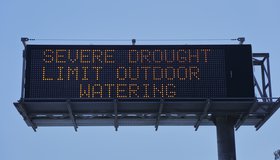
California Expands Drought Emergency to Large Swath of State
After one of the warmest, driest springs on record, most of the American west is in extensive drought. Amid acute water shortages in northern and central California, a drought emergency has been expanded to a large swath of the state.

PACE Terrestrial-Land Community Assessment
NASA’s Plankton, Aerosol, Cloud, ocean Ecosystem (PACE) mission is inviting the terrestrial-land community to provide insight into how PACE data products can be used.

New SWOT Satellite to Survey World's Water
How much water sloshes around in Earth’s lakes, rivers, and oceans? And how does that amount change over time? The upcoming Surface Water and Ocean Topography (SWOT) mission plans to find out.

Our Planet, Our Future
The 2021 Nobel Prize Summit issues an urgent call for action to achieve effective planetary stewardship and global sustainability.
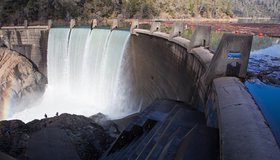
Covering Canals With Solar Panels Could Reduce Emissions, Save Water
A new study finds that covering thousands of miles of California’s canals with solar panels could help the state meet its ambitious goals to reduce greenhouse emissions as well as improve irrigation management.
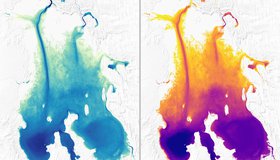
Sizing up Remote Lakes From Space
Researchers have found a new way to measure the depth of some of the most isolated, shallow lakes, using NASA's ICESat-2 satellite. Knowing the shapes of lake beds in dry regions enables us to better estimate the amount of water stored in these basins.

Using Floodwater to Weather Droughts
Floodwaters aren't what most would consider a blessing. But they could help remedy California’s increasingly parched groundwater systems, according to a new study.

NASA 2021 Water Resources Solicitation
NASA has released a 2021 solicitation for water-resource proposals through NASA's Research Opportunities in Space and Earth Sciences (ROSES). The first-round deadline is May 21, 2021.
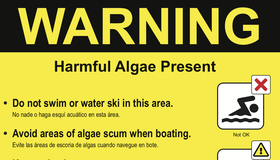
Green Lakes From Space
Harmful algal blooms are often hard to predict. NASA's Earth-observing satellites are uniquely poised to help spot them, and track the many ways that different parts of the Earth's system are connected.
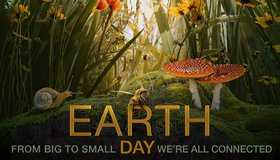
We're All Connected
From big to small...we’re all connected. In honor of Earth Day this week, NASA is hosting an Earth Day Virtual Event and releasing a range of activities, live talks, games, videos and great downloadable posters and books.
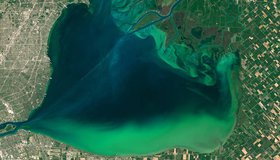
When The Water Isn't Fine
The Cyanobacteria Assessment Network (CyAN) - a joint EPA, NASA, NOAA and USGS project - uses satellites to monitor harmful algal blooms in over 2,000 of the largest U.S. lakes. Since its launch, CyAN has saved millions of dollars in monitoring and health costs.

Climate Change Devastates Housing Security
In 2020, there were 22 billion-dollar U.S. climate disasters - floods, storms, droughts, heatwaves. One third of U.S. homes are at high risk from natural disaster, with many homeowners bearing the brunt of costly repairs.

Urgent Action Needed to Secure Global Food Supply
A comprehensive new review calls for urgent climate action to secure nutrition around the world. Climate change will have a major impact on global food production and human health without collaboration betwen consumers, food industries, policy makers and government.

Satellites Shaping Algal Bloom Monitoring Standards
Earth data are becoming more widely valued. For the first time, satellite data have been included in the World Health Organization’s guide on monitoring harmful algal blooms worldwide. The update draws directly from the Cyanobacteria Assessment Network, a multi-agency water project involving NASA.
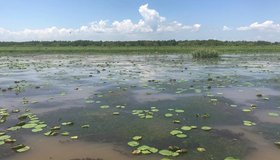
Delta-X Field Campaign Begins in Louisiana
Teams are heading out by land, water and air to collect data that will be used to forecast land gain and loss in the Mississippi River Delta as a result of sea level rise.

WWAO Passes Baton to U.S. Dept. of Agriculture
We have liftoff! NASA WWAO's new Soil Moisture Data System is operational and has been handed off to its partner, the U.S. Department of Agriculture, as the project comes to a close.

WWAO 2020 Annual Report
In the face of a global pandemic, 2020 underscored the need for data to drive decision making. Improving the way we manage water is as critical as ever. WWAO’s Annual Report, now available, summarizes how we endeavored to move the needle in 2020.

New Partnership to Support Sustainable Agriculture
NASA’s Harvest program and soil analytics company CropX have announced a new partnership. The alliance will provide farmers and industry experts with insights that help improve farming sustainability by conserving resources and improving crop yields.
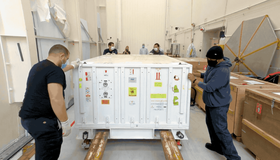
NISAR Spacecraft Takes Leap Forward
NISAR, an SUV-sized Earth satellite that will feature the largest reflector antenna ever launched by NASA, is taking shape in the clean room at NASA's Jet Propulsion Laboratory. Its mission is to track disasters as well as the effects of climate change.
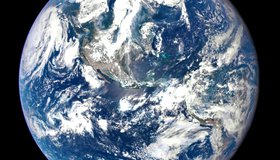
NASA Joins National Climate Task Force
As a leading agency observing and understanding environmental changes on Earth, NASA has joined the Biden administration's National Climate Task Force.
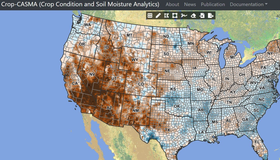
NASA Data Power New Soil Moisture Portal
WWAO's new soil moisture data portal - Crop-CASMA - is live. Crop-CASMA, which provides high-resolution, field-scale soil wetness from NASA satellites in an easy-to-use format, is a collaboration between NASA, the U.S. Department of Agriculture and George Mason University.
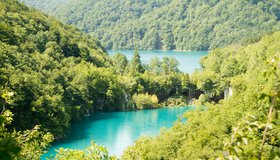
Humans Shifting Earth's Surface Water Storage
Using NASA's Ice, Cloud and land Elevation Satellite 2 (ICESat-2), scientists have shown humans are having a much bigger impact on surface storage variability than previously thought, with over half of the planet's variability happening in managed reservoirs.
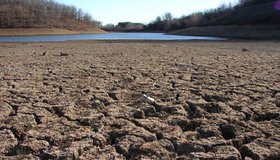
California’s Rainy Season Now Starts a Month Later
California's annual rainy season now begins a month later than it did just 60 years ago, shifting from November to December. The results are consistent with climate models that predict drier autumns for California in a warming climate.

WWAO Request For Information
WWAO is launching new water projects in the U.S. Columbia River Basin. As part of this effort, we’re looking for information on activities using NASA data or technology that could address key water issues in the region.
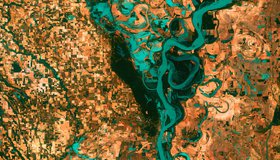
One Third of U.S. Rivers Have Changed Color
Rivers are among the most degraded ecosystems on Earth. The first map of river color from Landsat surface-reflectance data shows one third of U.S. rivers have changed color significantly over the last 35 years.
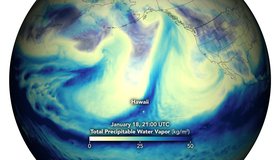
Potent Atmospheric Rivers Douse Pacific Northwest
In mid-January, the U.S. Pacific Northwest was soaked by several episodes of heavy rainfall, leading to widespread flooding and landslides. NASA data show these rivers in the sky.

Climate Change Shifting Earth’s Rain Belt
Work from UC Irvine and NASA shows climate change will move Earth's tropical rain belt, with cascading effects on water availability and potential threats to global food security.
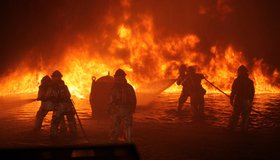
2020 Was Warmest Year on Record
2020 was a rough year for planet Earth, and NASA found it was the hottest on record. Our warming planet fanned the flames of extreme wildfires, drought and hurricanes.

Seeing COVID From Space
NASA is tracking the effects of the COVID-19 pandemic on our air, land, water and climate. The data have been collected in a free, openly-available online dashboard.
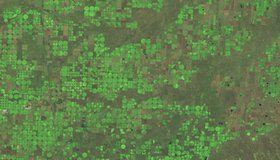
NASA, USDA Increasing Innovation in Agriculture
A new agreement between the U.S. Department of Agriculture and NASA will strengthen agricultural and Earth science research. WWAO’s collaboration with the USDA on its High-Resolution Soil Moisture Project fits into this larger partnership.

From Space to Farm
Farmers rely on the Landsat satellite to make decisions about crops, with far-reaching implications that can impact what we see on our dinner plate. In this curious video, Landsat's view of crops from space can be heard in the form of music.

Sea-Level Projections Drive San Francisco's Plans
Access to the latest information about sea-level rise is crucial to many coastal cities. New NASA research is helping San Francisco plan measures to adapt to rising seas.
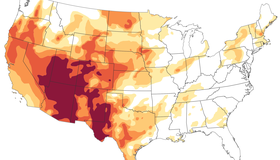
The Drying U.S. West
A serious drought has flared up across half of the United States, with about a third of the country suffering from extreme or exceptional drought. This familiar story has been playing out for the past two decades.

Connecting The Drops - Nikki Tulley, Navajo Nation
Nikki Tulley is a member of the Navajo Nation working with WWAO on its Navajo Drought Project. She explains why she's on a mission to help her community protect its most vital resource: water.

WWAO Passes The Baton to The Navajo
We have liftoff! NASA WWAO's new Drought Severity Tool is operational and has been handed off to its tribal partner, the Navajo Nation, as the project comes to a close.
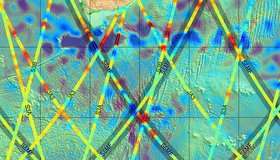
New Ocean Satellite Releases Impressive First Data
Launched three weeks ago, the Sentinel-6 Michael Freilich satellite has returned its first data and is surpassing expectations. The NASA-U.S.-European satellite will measure sea-level rise with unprecedented accuracy.
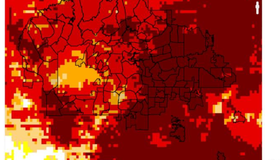
NASA-Navajo Drought Tool User Guide Launched
WWAO's Navajo Nation Drought Tool User Guide is now live. This marks a milestone in the transition of our Navajo Drought Project from research to decision makers, and is key to building capacity within the Navajo community to use the tool.

Biodiversity Beneath Our Feet
Increasing attention is being paid to soil biodiversity, which drives many processes that produce food or purify soil and water. A UN report highlights how critical soil organisms are, and how soil biodiversity can offer solutions to today's global threats.
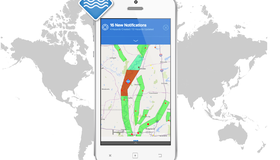
Early Access to Global Flood Tracking
Floods are the most deadly and costly natural hazard. A NASA team is streamlining access to real-time satellite data so disaster managers can make informed decisions, faster.
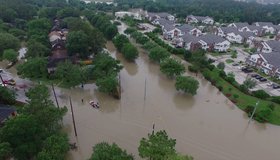
Satellites Improving Flood And Landslide Monitoring
NASA scientists Dalia Kirschbaum and Maggi Glascoe are using satellite data to pioneer improved landslide and flood alerting around the world.
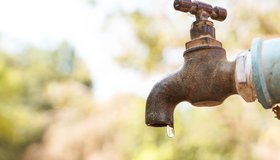
Disparities in U.S. Water Access
A new study reveals key disparities in piped water access in urban U.S. areas. From 2013 to 2017, 1.1M people had insecure water access, with half located in the 50 largest metropolitan areas. Gaps in water access are underpinned by precarious housing conditions and systemic inequality.
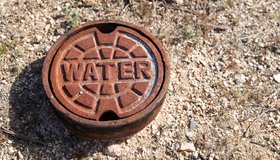
NASA's Water Portal Launched
Our new NASA Water Portal is now live. The portal serves as a hub for building connections between our catalogs of Water Data Needs and Water Capabilities and our partners, including water managers, decision makers, and scientists.
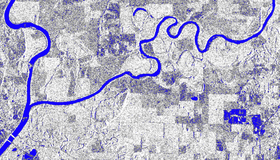
Push to Make NASA Earth Data More Accessible
NASA has accumulated 40 petabytes of Earth science data, twice as much as all of the information stored by the Library of Congress. In the next five years, that will grow to 250 PB. 11 new projects are launching to help manage, store and search these data.
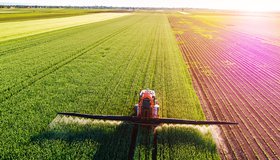
Arming Farmers With Data as Water Dwindles
Water managers need accurate, consistent and timely data. A new online platform called OpenET puts NASA data in the hands of farmers, water managers and conservation groups.

Carrying Water For The Community
Water is critical for the arid, underserved Navajo Nation. Carlee McClellan, Navajo hydrologist, is working with WWAO to deliver a space-based solution for monitoring water availability.

New WWAO Report – From Research to Operations
In collaboration with the Western States Water Council, WWAO has released a report on transitioning water science from research to decision maker. The findings outline best practices as well as the challenges that must be overcome.

When it Comes to Water, Think Global
Planet Earth should be named Planet Water, with 70% of its surface covered in ocean. Yet the freshwater that sustains our lives is a precious resource. NASA is at the forefront of monitoring it from every angle.
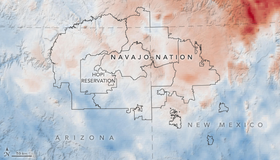
Tracking Water For The Navajo
A new web tool designed by WWAO scientists could help the Navajo Nation anticipate and respond to drought. The latest maps give insight into the moderate to severe drought conditions affecting much of the area.

Seeking Relief From Drought, Navajo Turn to NASA
On the Navajo Nation, access to drinking water is limited. Over 40 percent of homes lack running water. The community is hit by frequent, pervasive drought. WWAO is developing a new drought tool that, with the help of satellite data, will enable Navajo water managers to hone in on drought severity and better manage the water they have.
